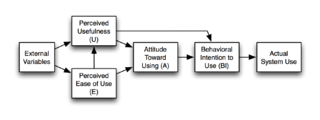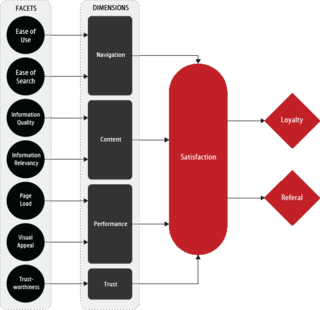Innovation in its modern meaning is "a new idea, creative thoughts, new imaginations in form of device or method". Innovation is often also viewed as the application of better solutions that meet new requirements, unarticulated needs, or existing market needs. Such innovation takes place through the provision of more-effective products, processes, services, technologies, or business models that are made available to markets, governments and society. An innovation is something original and more effective and, as a consequence, new, that "breaks into" the market or society. Innovation is related to, but not the same as, invention, as innovation is more apt to involve the practical implementation of an invention to make a meaningful impact in the market or society, and not all innovations require an invention. Innovation often manifests itself via the engineering process, when the problem being solved is of a technical or scientific nature. The opposite of innovation is exnovation.

The technology acceptance model (TAM) is an information systems theory that models how users come to accept and use a technology.
Ambivalence is a state of having simultaneous conflicting reactions, beliefs, or feelings towards some object. Stated another way, ambivalence is the experience of having an attitude towards someone or something that contains both positively and negatively valenced components. The term also refers to situations where "mixed feelings" of a more general sort are experienced, or where a person experiences uncertainty or indecisiveness.
SERVQUAL is a multi-dimensional research instrument, designed to capture consumer expectations and perceptions of a service along the five dimensions that are believed to represent service quality. SERVQUAL is built on the expectancy-disconfirmation paradigm, which in simple terms means that service quality is understood as the extent to which consumers' pre-consumption expectations of quality are confirmed or disconfirmed by their actual perceptions of the service experience. When the SERVQUAL questionnaire was first published in 1985 by a team of academic researchers, A. Parasuraman, Valarie Zeithaml and Leonard L. Berry to measure quality in the service sector, it represented a breakthrough in the measurement methods used for service quality research. The diagnostic value of the instrument is supported by the model of service quality which forms the conceptual framework for the development of the scale. The instrument has been widely applied in a variety of contexts and cultural settings and found to be relatively robust. It has become the dominant measurement scale in the area of service quality. In spite of the long-standing interest in SERVQUAL and its myriad of context-specific applications, it has attracted some criticism from researchers.
Customer satisfaction is a term frequently used in marketing. It is a measure of how products and services supplied by a company meet or surpass customer expectation. Customer satisfaction is defined as "the number of customers, or percentage of total customers, whose reported experience with a firm, its products, or its services (ratings) exceeds specified satisfaction goals."
Learned optimism is the idea in positive psychology that a talent for joy, like any other, can be cultivated. It is contrasted with learned helplessness. Learning optimism is done by consciously challenging any negative self talk.
Cognitive style or thinking style is a concept used in cognitive psychology to describe the way individuals think, perceive and remember information. Cognitive style differs from cognitive ability, the latter being measured by aptitude tests or so-called intelligence tests. There is controversy over the exact meaning of the term "cognitive style" and whether it is a single or multiple dimension of human personality. However it remains a key concept in the areas of education and management. If a pupil has a cognitive style that is similar to that of his/her teacher, the chances are improved that the pupil will have a more positive learning experience. Likewise, team members with similar cognitive styles likely feel more positive about their participation with the team. While matching cognitive styles may make participants feel more comfortable when working with one another, this alone cannot guarantee the success of the outcome.
Optimism bias is a cognitive bias that causes someone to believe that they themselves are less likely to experience a negative event. It is also known as unrealistic optimism or comparative optimism.

The technology life-cycle (TLC) describes the commercial gain of a product through the expense of research and development phase, and the financial return during its "vital life". Some technologies, such as steel, paper or cement manufacturing, have a long lifespan while in other cases, such as electronic or pharmaceutical products, the lifespan may be quite short.
The unified theory of acceptance and use of technology (UTAUT) is a technology acceptance model formulated by Venkatesh and others in "User acceptance of information technology: Toward a unified view". The UTAUT aims to explain user intentions to use an information system and subsequent usage behavior. The theory holds that there are four key constructs: 1) performance expectancy, 2) effort expectancy, 3) social influence, and 4) facilitating conditions.
Kenneth Mark Colby was an American psychiatrist dedicated to the theory and application of computer science and artificial intelligence to psychiatry. Colby was a pioneer in the development of computer technology as a tool to try to understand cognitive functions and to assist both patients and doctors in the treatment process. He is perhaps best known for the development of a computer program called PARRY, which mimicked a person with paranoid schizophrenia and could "converse" with others. PARRY sparked serious debate about the possibility and nature of machine intelligence.
Rockbridge Associates, Inc. is a market research firm located in Great Falls, Virginia that specializes in issues for technology and services companies and associations. Rockbridge offers services addressing business issues such as product development, customer satisfaction, segmentation, branding and pricing. The firm provides the National Technology Readiness Survey, which has tracked consumer technology beliefs since 1999. Rockbridge is a member of the Council of American Survey Research Organizations (CASRO).
Experiential avoidance (EA) has been broadly defined as attempts to avoid thoughts, feelings, memories, physical sensations, and other internal experiences—even when doing so creates harm in the long-run. The process of EA is thought to be maintained through negative reinforcement—that is, short-term relief of discomfort is achieved through avoidance, thereby increasing the likelihood that the behavior will persist. Importantly, the current conceptualization of EA suggests that it is not negative thoughts, emotions, and sensations that are problematic, but how one responds to them that can cause difficulties. In particular, a habitual and persistent unwillingness to experience uncomfortable thoughts and feelings is thought to be linked to a wide range of problems.

The Webreep Model is an information systems theory that explains and predicts website satisfaction, loyalty, and word-of-mouth. The model suggests that four factors directly influence website satisfaction. Website satisfaction, in turn, directly influences website visitor loyalty and likelihood of referral. Each factor is “shaped” by facets. The four dimensions and factors include:
Technological self-efficacy (TSE) is "the belief in one's ability to successfully perform a technologically sophisticated new task". This is a specific application of the broader and more general construct of self-efficacy, which is defined as the belief in one's ability to engage in specific actions that result in desired outcomes. Self efficacy does not focus on the skills one has, but rather the judgments of what one can do with his or her skills. Traditionally, a distinguishing feature of self efficacy is its domain-specificity. In other words, judgments are limited to certain types of performances as compared to an overall evaluation of his or her potential.
The Six-factor Model of Psychological Well-being is a theory developed by Carol Ryff which determines six factors which contribute to an individual's psychological well-being, contentment, and happiness. Psychological well-being consists of positive relationships with others, personal mastery, autonomy, a feeling of purpose and meaning in life, and personal growth and development. Psychological well-being is attained by achieving a state of balance affected by both challenging and rewarding life events.

Optimism is a mental attitude reflecting a belief or hope that the outcome of some specific endeavor, or outcomes in general, will be positive, favorable, and desirable. A common idiom used to illustrate optimism versus pessimism is a glass filled with water to the halfway point: an optimist is said to see the glass as half full, while a pessimist sees the glass as half empty.
Second wave positive psychology is concerned with how to bring out the best in individuals and society in spite of and because of the dark side of human existence through the dialectical principles of yin and yang. There has also been a distinct shift from focusing on individual happiness and success to the double vision of individual well-being and the big picture of humanity. PP 2.0 is more about bringing out the "better angels of our nature" than achieving optimal happiness or personal success, because the better angels of empathy, compassion, reason, justice, and self-transcendence will make people better human beings and this world a better place. PP 2.0 pivots around the universal human capacity for meaning seeking and meaning making in achieving optimal human functioning under both desirable and undesirable conditions. This emerging movement is an inevitable and necessary corrective response to the inherent problems of what has been called "positive psychology as usual".
A. "Parsu" Parasuraman is a marketing professor and author. He is the Professor and the James W. McLamore Chair in Marketing at the University of Miami.
Moral identity is a concept within moral psychology referring to the importance of morality to a person’s identity, typically construed as either a trait-like individual difference, or set of chronically accessible schemas.



